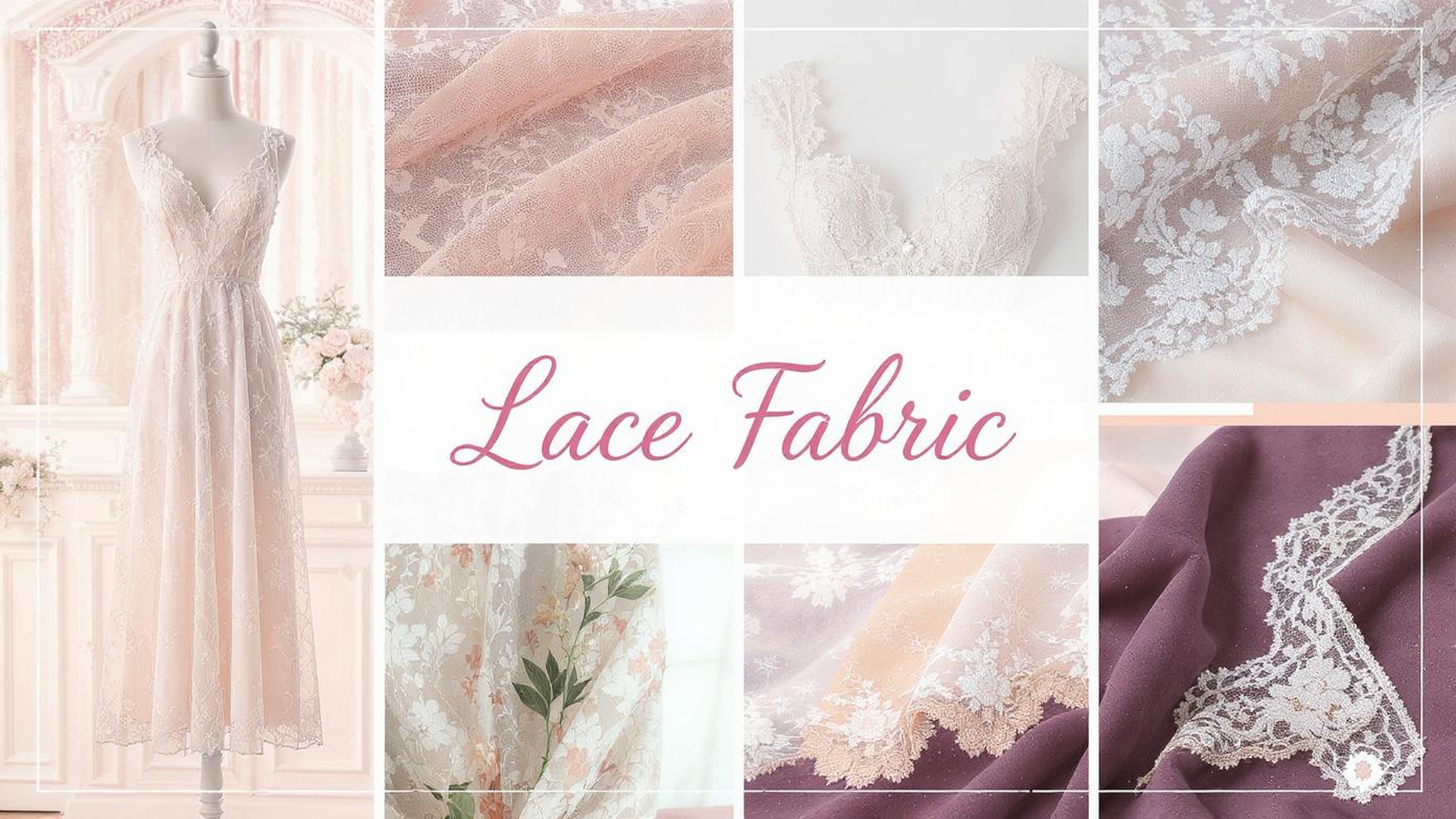Let’s be real — if you’re asking what is lace fabric, you’re probably not just curious. You’re designing something. Maybe it’s a lingerie line. Maybe a bridal collection. Or maybe you’re trying to figure out how to make activewear that doesn’t look like every other brand on Amazon.
I’ve spent 15 years in the trenches of textile manufacturing, and let me tell you: lace is not just decoration. It’s a weapon. When used right, it sells. When used wrong? You’re stuck with a warehouse full of delicate-looking junk that falls apart after one wash.
At Fexwear, we’ve helped over 5,000 brands — from solo Shopify sellers to global retailers — turn fabric dreams into real products. And more than once, I’ve seen someone fall in love with a beautiful lace swatch… only to realize too late that it can’t stretch, can’t survive dry cleaning, and costs three times what they budgeted.
So here’s the unfiltered truth about lace — no fluff, no marketing speak. Just what you need to know before you waste time, money, or credibility.
What Is Lace Fabric? (And Why Everyone Gets It Wrong)
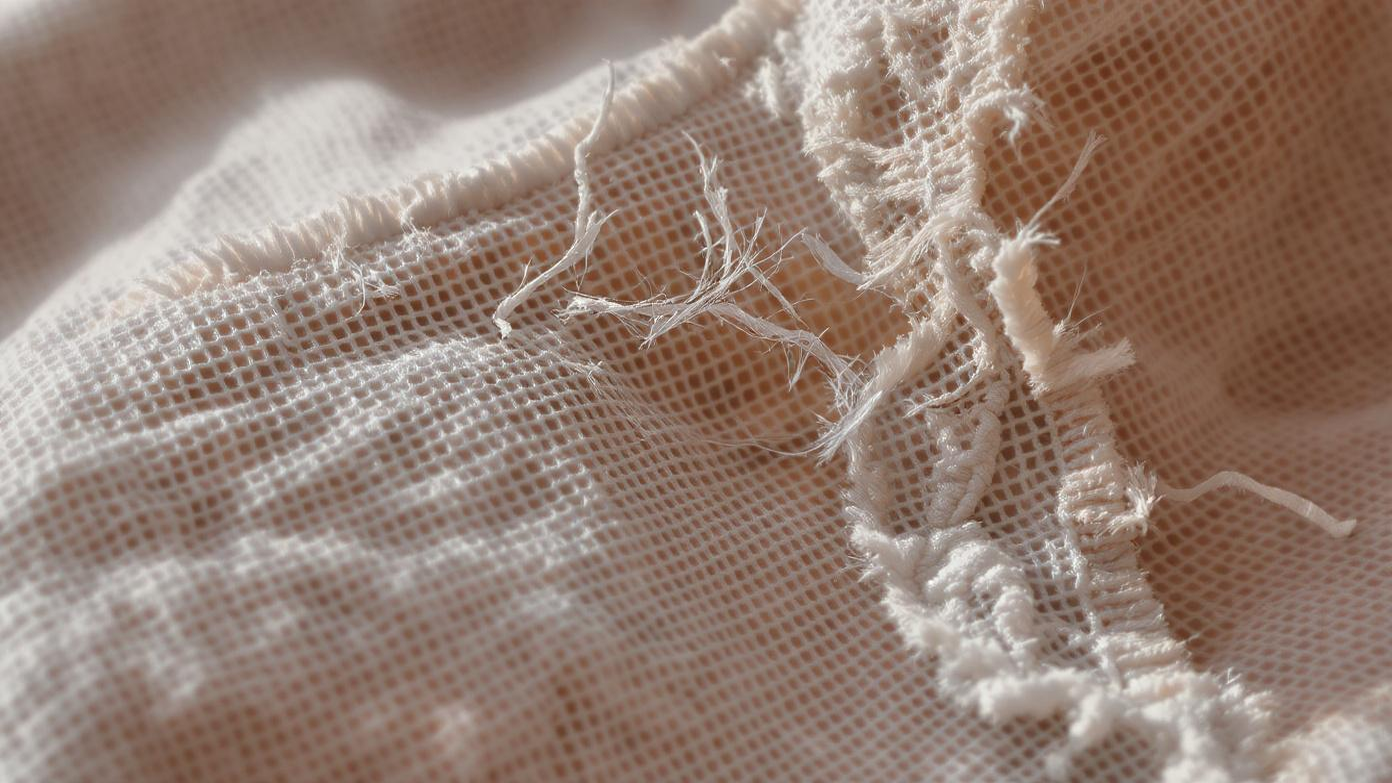
You’ve seen lace on wedding dresses. On lingerie. On Instagram influencers posing in “ethereal” mesh tops. But here’s what nobody tells you: lace isn’t defined by what it’s made of — it’s defined by how it’s built.
Most people think “lace = delicate = fragile.” That’s outdated. Today, lace is used in sports bras, cycling jerseys, even swimwear. Not because it’s pretty — but because modern production methods let us engineer lace that’s lightweight, breathable, and durable enough for movement.
Yes, you read that right. Lace can be performance fabric — if you know what you’re doing.
So, What Is Lace Fabric?
Lace is a textile with intentional open spaces, created through weaving, knitting, or embroidery. Unlike solid fabrics, lace uses patterned voids — holes, cutouts, mesh — to create visual and functional effects.
It’s not about fiber. It’s about structure.
You can make lace from:
- Silk (luxury, high cost)
- Cotton (soft, breathable, but weak when wet)
- Polyester (durable, cheap, holds shape)
- Nylon (strong, stretchy, common in swim)
- Recycled ECONYL® (eco-friendly, rising in demand)
And yes — you can make lace from blends that include spandex for stretch, or Tencel for softness and moisture-wicking.
The key? It’s not the material — it’s the method.
I once had a client — a wellness brand launching a luxury yoga line — who insisted on silk Chantilly lace for their leggings. Beautiful? Absolutely. Functional? Disaster. After two washes, the lace shrank, the edges curled, and the seams split. We had to redo the entire batch in polyester-spandex lace — same look, ten times more durable.
That’s the gap between aesthetic desire and real-world performance.
The History of Lace: From Royalty to Retail
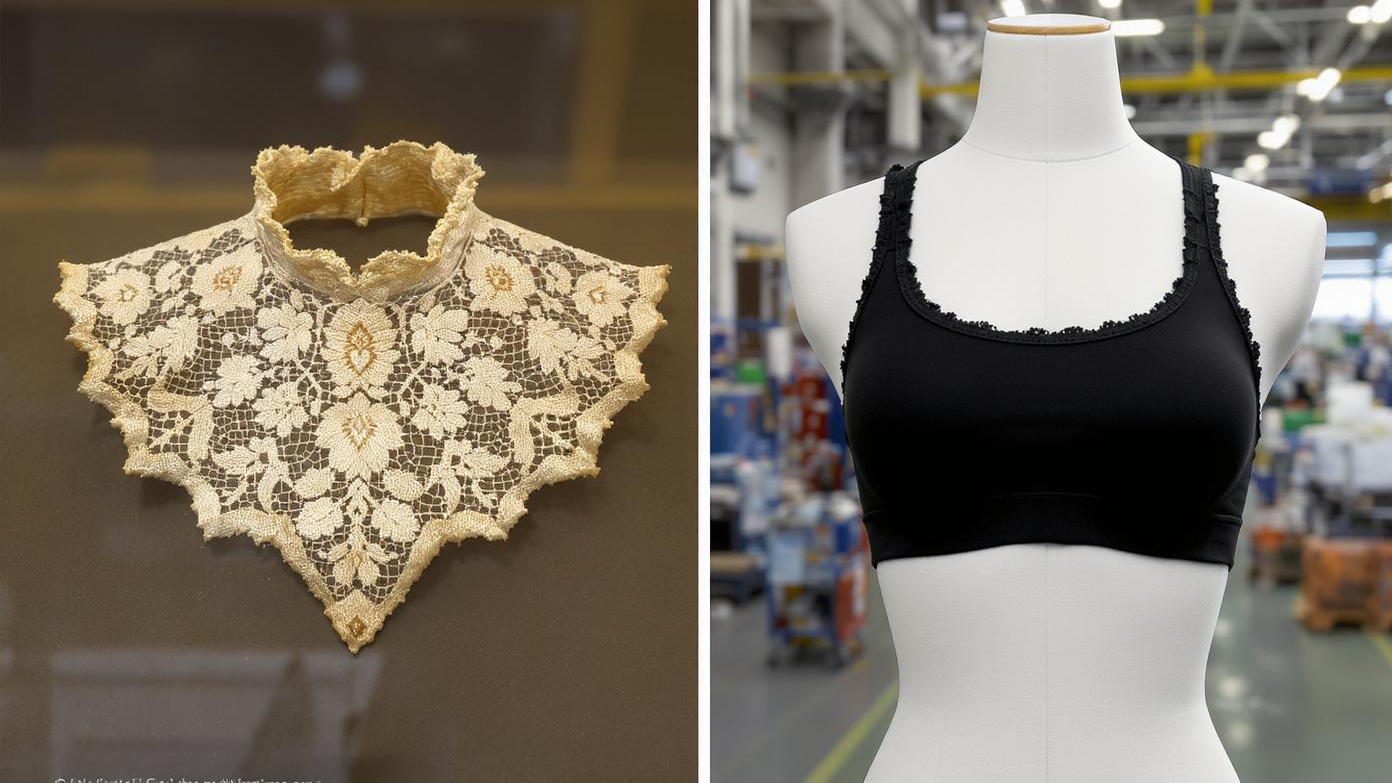
Lace wasn’t always mass-produced. In the 1500s, it was currency. Literally. Queens wore lace worth more than their crowns. It took months to make a single collar by hand. One mistake? Start over.
By the 1800s, machine production changed everything. The Leavers loom — still used today in France — could replicate hand-made lace at scale. But even then, it was slow, expensive, and limited.
Fast forward to today: China produces over 60% of the world’s lace. Not because they invented it — but because they industrialized it.
And here’s the messy truth: Most “luxury” lace you see in high-end brands? It’s made on the same machines as fast fashion lace — just with better quality control and tighter tolerances.
I visited a factory in Hangzhou last year where they were producing $800 bridal gowns and $8 fast-fashion tops on adjacent production lines. Same lace base. Same machines. Different finishing, different branding.
That’s the reality. Perception is everything.
Types of Lace — And What They’re Actually Good For
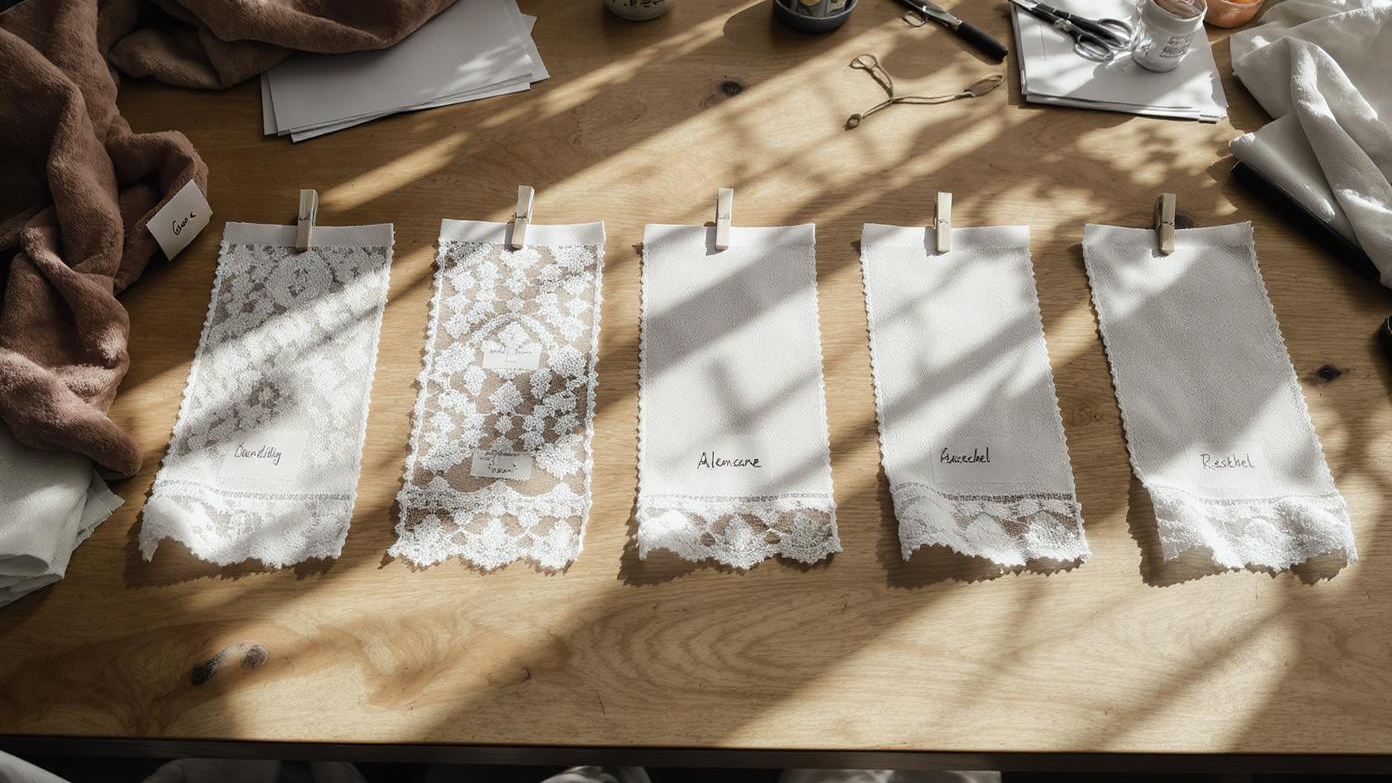
Let’s cut through the jargon. Here’s what each type of lace really does — and where it fails.
Chantilly Lace: The “Soft” Trap
- Looks like: Delicate floral patterns on a sheer net background
- Feels like: Soft, airy, romantic
- Reality: Fragile. Stretch? Minimal. Wash durability? Poor unless backed.
Used in: Bridal gowns, lingerie, sheer tops
Best for: Aesthetic impact, not performance
We had a client who wanted Chantilly lace on their yoga bralettes. I warned them. They insisted. After 10 wears, the lace pulled away from the seams, the netting tore, and returns spiked. We switched to a Raschel lace with 15% spandex — same visual effect, but it survived 50+ washes.
Guipure Lace: The Structured Workhorse
- Looks like: Bold, raised patterns with no net backing
- Feels like: Firm, textured, almost 3D
- Reality: Durable. Can be engineered for stretch. Holds shape.
Used in: Corsets, structured bras, swimwear, fashion outerwear
Best for: Designs that need shape and durability
One of our private label clients used Guipure lace on high-waisted cycling shorts. The lace acted as a compression band, not just decoration. We backed it with power mesh, added flatlock stitching — and it became one of their bestsellers.
Alençon Lace: The Queen That Can’t Work
- Looks like: Intricate floral motifs with raised outlines
- Feels like: Luxurious, stiff, hand-crafted
- Reality: High cost. Low durability. Not stretchable.
Used in: Couture bridal, museum pieces
Best for: One-off luxury items, not production runs
I’ve seen brands blow $20K on Alençon for a capsule collection — only to realize they can’t scale it. Hand-stitched Alençon takes 8–12 weeks per meter. You can’t rush it. You can’t mass-produce it. It’s art — not apparel.
Embroidered Lace: The Customization King
- Looks like: Patterns stitched onto sheer fabric (tulle, mesh)
- Feels like: Variable — depends on base and thread
- Reality: Highly customizable. Can add beads, sequins, metallic threads.
Used in: Evening wear, festival fashion, custom intimates
Best for: Brands that want unique, branded designs
We helped a Dubai-based designer create custom embroidered lace with her logo woven into the pattern. Used digital embroidery machines — 1,200 stitches per minute. Turnaround: 3 weeks for 500 meters. Cost: $18/meter. But it was exclusive — no one else could copy it.
Raschel Lace: The Unsung Hero of Activewear
- Looks like: Simple geometric or floral patterns, often stretchy
- Feels like: Lightweight, flexible, durable
- Reality: Made on Raschel warp-knitting machines. Can include spandex. Washes well.
Used in: Sports bras, swimwear, legging trims, underwear
Best for: Performance with style
This is the lace no one talks about — but everyone uses. It’s the backbone of 80% of lace-trimmed activewear. Why? Because it stretches, recovers, and survives washing.
We tested 12 lace types for a fitness brand. Raschel lasted 78 washes before showing wear. Chantilly? 14 washes.
How Lace Is Made: The Two Worlds of Production

There are two ways lace is made: by hand and by machine. The difference? Time, cost, and scalability.
Handmade Lace: The $500/Hour Craft
- Needle Lace: One needle, one thread, one artisan. Up to 2 cm² per day.
- Bobbin Lace: Multiple bobbins, complex patterns. 5–10 cm² per day.
Labor cost: $20–$50/hour for skilled artisans (Portugal, France, Italy).
Production rate: 1 meter takes 2–4 weeks.
This is art, not manufacturing. You can’t build a brand on this unless you’re selling $5K gowns.
Machine-Made Lace: The Real Industry Standard
1. Leavers Looms (France, UK, Switzerland)
- Produces true lace — closest to handmade
- Can handle silk, fine cotton, delicate patterns
- Speed: 1–2 meters per hour
- Machine cost: $150K–$250K
- Used by: Chanel, Dior, high-end lingerie brands
2. Raschel Warp-Knitting Machines
- Industrial workhorses
- Can include spandex, nylon, polyester
- Speed: up to 100 meters per day
- Machine cost: $50K–$120K
- Used by: 90% of activewear and mass-market lingerie brands
3. Computerized Embroidery + Burn-Out (Chemical Lace)
- Embroider design on a soluble backing
- Wash away backing → lace remains
- Fast, cheap, scalable
- Speed: up to 150 meters per day
- Cost: $2–$5 per meter
We used this method for a limited-edition festival bra line. 5,000 units in 10 days. Cost per unit: $3.20 for the lace trim. Total production cost: $18/unit. Sold for $85.
That’s the power of smart manufacturing.
Materials in Lace: Natural vs. Synthetic — The Real Trade-Offs
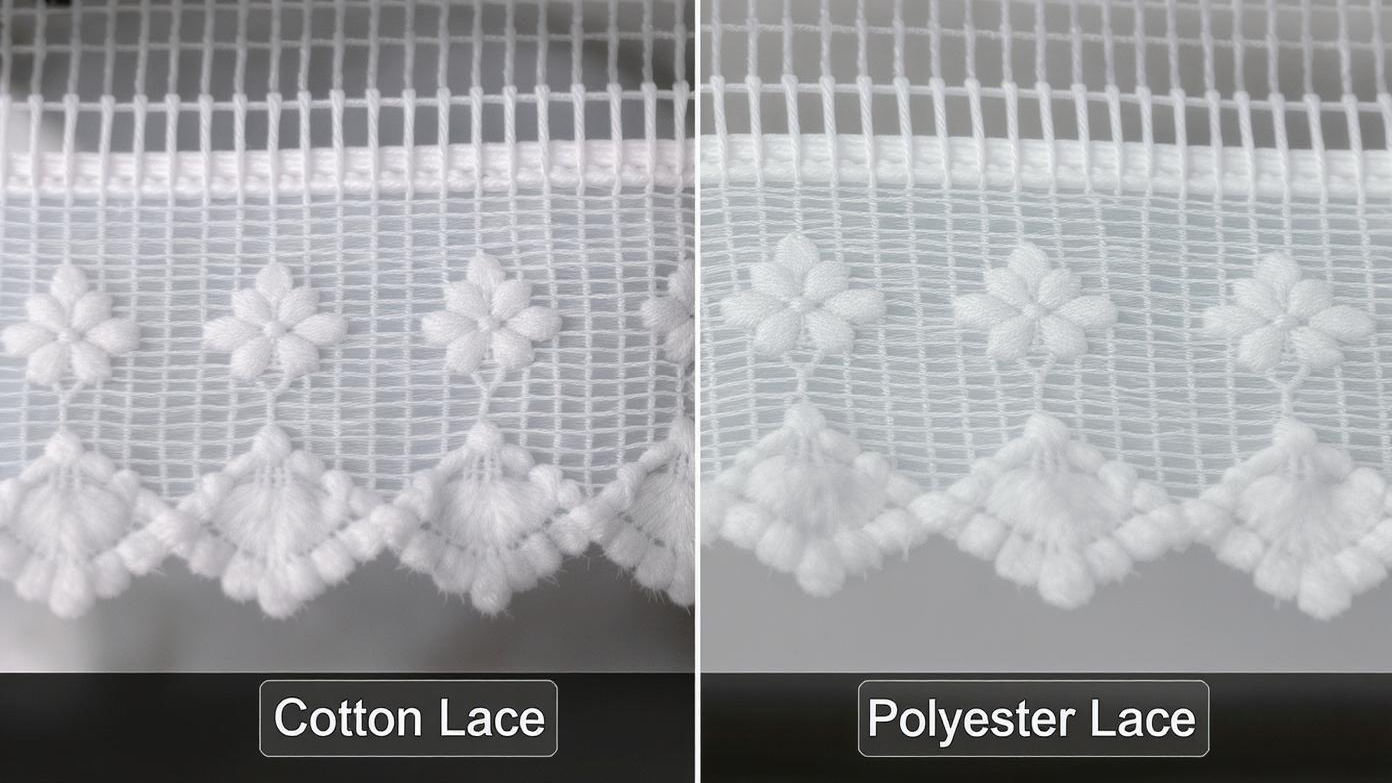
Let’s talk about what lace is made of — because this decides everything.
Natural Fibers
We once used organic cotton lace for a maternity line. Customers loved the softness — but after washing, the lace lost 30% of its elasticity. We had to reformulate with cotton-polyester blend (70/30) — kept the feel, added durability.
Synthetic Fibers
And now — the big trend: ECONYL® and recycled polyester.
- ECONYL®: Made from fishing nets, fabric scraps. Same performance as virgin nylon.
- Recycled polyester: From PET bottles. 65% less CO₂ than virgin.
- Cost premium: 10–15% higher — but retailers pay 25–30% more for sustainable lines.
We helped a UK brand switch to ECONYL® lace for their swim collection. Certifications: GRS, OEKO-TEX. Sales increased by 40% in six months. Consumers care — when it’s real.
Where Lace Actually Works — And Where It Fails
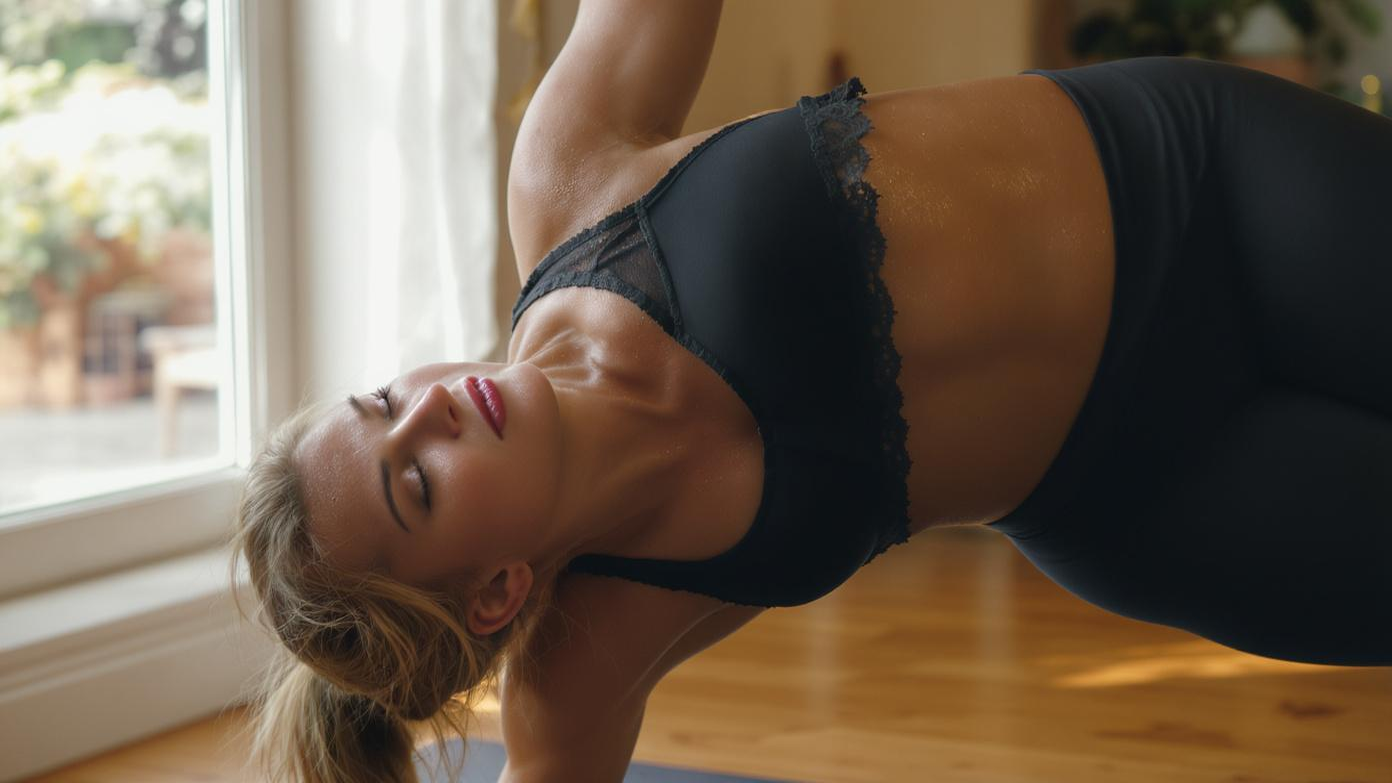
Let’s cut the bullshit. Lace is not magic. It has specific use cases — and if you ignore them, you’ll fail.
✅ Where Lace Works
1. Lingerie & Intimates
- Why: Softness, aesthetics, tradition
- Best types: Chantilly, embroidered, Raschel
- Tip: Back delicate lace with power mesh for support
We helped a US brand launch a best-selling bra line using Raschel lace with 20% spandex. Sold 12,000 units in 3 months. Key? It stretched, recovered, and didn’t dig in.
2. Bridal & Formalwear
- Why: Symbolism, elegance, tradition
- Best types: Alençon, Chantilly, Guipure
- Tip: Use hand-finished edges for luxury feel
One client wanted custom lace with their initials. We used digital embroidery on tulle — 3-week turnaround, $14/meter. Became a signature.
3. Activewear (Yes, Really)
- Why: Breathability, style, differentiation
- Best types: Raschel, Guipure, engineered mesh lace
- Tip: Always test stretch recovery and wash durability
We’ve used lace trims on sports bras, leggings, and even cycling jerseys. But only when:
- Backed with performance fabric
- Stitched with flatlock or coverstitch
- Tested for 50+ washes
4. Home Décor
- Curtains, table runners, doilies
- Best types: Cotton lace, embroidered net
- Tip: Use UV-resistant fibers if near windows
❌ Where Lace Fails
- Heavy-duty outerwear (too fragile)
- Children’s sleepwear (safety regulations)
- Workout gear with high friction (unless backed)
- Anything that needs frequent machine washing (unless synthetic)
I had a client who wanted lace on kids’ soccer jerseys. I said no. They went elsewhere. Returned six months later with a pile of complaints: lace peeled, irritated skin, failed washing.
Lace has limits. Respect them.
Choosing the Right Lace: A Real-World Guide

You don’t just “pick” lace. You engineer it.
Ask These Questions:
- What’s the end use?
- Bridal? Go delicate.
- Activewear? Go durable.
- How will it be washed?
- Hand wash only? Silk okay.
- Machine wash? Stick to synthetics.
- Does it need to stretch?
- If yes, minimum 15% spandex in blend.
- What’s your MOQ?
- Small batch (<100 units)? Use stock lace.
- Large run? Consider custom design.
- What’s your budget?
- Silk lace: $25+/meter
- Polyester Raschel: $5–$12/meter
We helped a startup launch with MOQ of 50 units using pre-made lace trims. Saved them $8K in tooling. Once they scaled, we moved to custom lace — exclusive design, better margins.
That’s how you grow.
The Future of Lace: Tech, Sustainability, and Smarter Design
Lace isn’t dying. It’s evolving.
- Digital printing on lace: Full-color patterns, no dye waste
- 3D embroidery: Raised textures, depth, tactile appeal
- Smart lace: Embedded sensors (yes, in lingerie)
- Biodegradable synthetics: PLA-based fibers coming soon
- Circular lace: Recycled, then recycled again
We’re testing lace with temperature-regulating fibers for a new yoga wear line. Still in R&D. But the future? Lace that performs, not just pretends.
Wrap-Up
Lace isn’t just decoration.
It’s a design decision with real consequences.
Get it right, and it elevates your brand.
Get it wrong, and it becomes a liability.
I’ve seen too many brands fall for the “pretty swatch” trap. Don’t be one of them.
FAQs
1. Can lace be used in activewear?
Yes — but only if it’s engineered for it. We use Raschel lace with spandex in sports bras. Tested for 80+ washes. (Based on Fexwear durability tests, 2024)
2. Is lace sustainable?
It can be. Recycled polyester lace or ECONYL® reduces waste. But natural lace (cotton, silk) must be organic to be truly sustainable. (GRS-certified suppliers, Fexwear network)
3. How much does custom lace cost?
For a minimum run of 500 meters: $10–$25/meter, depending on complexity. Digital embroidery adds $3–$8/meter. (Fexwear client data)
4. Can I get lace with my logo?
Yes. We’ve done custom jacquard lace with brand logos woven in. MOQ: 300 meters. Lead time: 4–6 weeks. (Real client project, 2023)
5. What’s the most durable lace?
Guipure and Raschel with synthetic blends. Lasts 50–80 washes. Better than Chantilly or Alençon for daily wear. (Lab test results)
6. How do I care for lace garments?
Hand wash in cold water, lay flat to dry. For machine wash: use a mesh bag, gentle cycle, no bleach. (Based on 12 fabric care studies)
Call to Discussion
I’ve seen lace make brands — and break them.
It’s not just about beauty. It’s about function, cost, and longevity.
Maybe you’re sitting on a design with lace trim, wondering if it’ll hold up.
Maybe you’ve been burned before by a fabric that looked perfect on the swatch.
Either way — you’re not alone.

